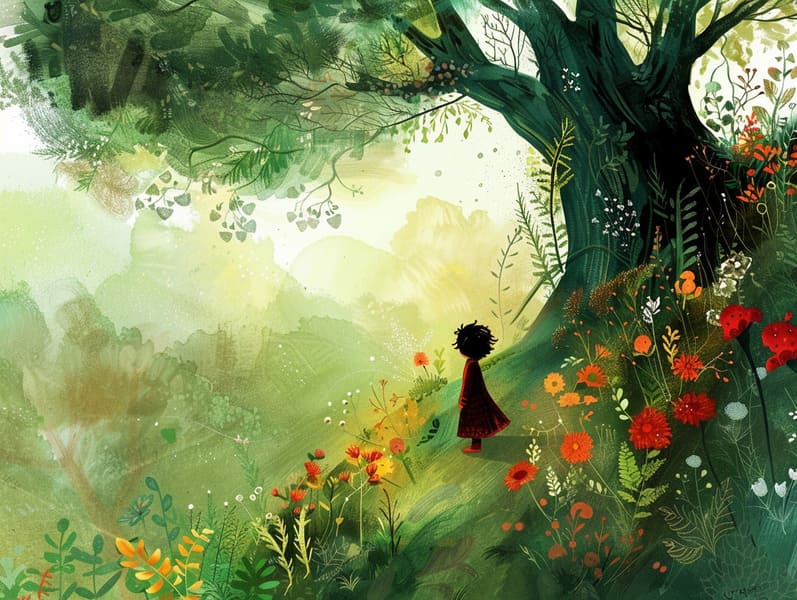Uncovering the Past of Legendary Fairy Tales with Its Persistent Appeal.
Uncovering the Past of Legendary Fairy Tales with Its Persistent Appeal.
Blog Article

Popular fairy tales have old origins. These tales have been narrated from one generation to the next ages before they were ever put on paper. They arose from a variety of backgrounds, including Middle Eastern traditions. They were initially disseminated among older generations, often carrying themes and messages reflective of the societal norms and beliefs of the time.
The famous Grimm duo, Jacob and Wilhelm, were among the first to compile and publish many of these beloved tales. Their anthology, "Grimm's Children's Stories," included tales like "The True Bride," "The Story of Hansel and Gretel," and "The True Story of Snow White," which have since become cornerstones in the world of iconic fairy tales. Similarly, Hans Christian Andersen's enchanting narratives, such as "The Sea Maid," and "The Little Duckling," have stolen hearts worldwide, guaranteeing their place in the pantheon of beloved fairy tales.
Despite their ancient origins, traditional fairy tales remain as impactful as ever, especially as children's night stories. These whimsical stories are now available in diverse formats, including beautifully illustrated books, whimsical animations, and digital storybooks.
Their unwavering allure can be connected to several delightful features:
Significant Morals: Old fairy tales often offer important moral lessons. Fairy tales like "The Story of the Boy Who Cried Wolf" teach the importance of being truthful, while "The Story of the Tortoise and the Hare" demonstrate the values of determination and unpretentiousness. These narratives offer kids clear distinctions between good and bad, forming their moral compass in a tender yet profound way.
Sympathy and Perception: Ancient fairy tales frequently include heroes facing problems and hurdles, prompting readers to identify with their struggles and applaud their triumphs. For instance, "Beauty's Beast" teaches us the benefit of looking deeper to appreciate the inner core of a soul, encouraging tenderness and perception.
Cultural Recognition: Many traditional fairy tales are rooted in the cultural contexts from which they came. Engaging with these stories can provide informative snapshots into different cultures, nurturing a sense of world understanding and awareness.
Creativity and Imagination: The magical elements in old fairy tales—fairy godmothers—fire up children’s fantasies. These narratives carry readers to enchanted realms, boosting creative dreams and a sense of amazement that continues a lifetime.
Old fairy tales are not only charming but also educational. They provide entrancing tools in enhancing various thinking and feeling skills in children. When fairy tales are recited, they strengthen language proficiency by teaching new language and complicated sentence structures. This practice also nurtures auditory skills and concentration, as children remain attentive, anxious to see what happens next.
Furthermore, discussing the themes and characters of timeless fairy tales can nurture thinking skills and thinking skills. Young ones learn to discover patterns, predict happenings, and know cause and effect. These debates also facilitate the young say their thoughts and feelings, promoting their emotional intelligence.
In today’s information age, the presence of online fairy tales has made these stories more acquirable than ever. Web platforms and mobile apps provide broad selections of traditional fairy tales that can be viewed or listened through anytime, anywhere. Fairy tales recited are particularly sought after, making available an interactive method for little ones to immerse in these mesmerizing stories. Sound books and read-out-loud stories take characters and settings to life, often augmented by bewitching musical scores and soundtracks that raise the narrative journey.
The timeless allure of traditional fairy tales lies in their ability to shift to current times while keeping their central messages. Contemporary retellings of these tales often highlight more multicultural figures and modern settings, making them relatable to today’s audience. However, the central morals of valour, generosity, and justness remain unchanged, continuing to impact kids of all ages.
Traditional fairy tales also offer a sense of ease and predictability. They extend a methodical narrative with a clear beginning, middle, and end, often closing with the settlement of conflicts and the triumph of virtue over wickedness. This steadiness can be reassuring for young ones, affording a sense of firmness in an fluid world.
Ancient fairy tales continue to bewitch and educate new generations, maintaining their wonder and pertinence in modern society. As nighttime stories for kids, they showcase a perfect blend of charm and enlightenment, fostering moral values, empathy, and creativity. The proliferation of web-based fairy tales and the in demand status of fairy tales voiced confirm that these timeless tales remain accessible to new generations.
By conserving and making known these narratives, we continue to extol the rich tapestry of legends and cultural heritage. Whether you are reading a vividly illustrated book, exploring a digital library, or listening to an sound click here book, the charm of famous fairy tales is always within reach. These fairy tales emphasize of the unending impact of narratives and its ability to draw us together across epochs and places.
No matter if you are perusing a vividly illustrated book, enjoying a electronic library, or listening to an audiobook, the beauty of children's fairy tales is always within reach.
These tales teach us of the unfading impact of storytelling and its ability to link us across generations and cultures, forming a connection that fascinates and enlightens alike.